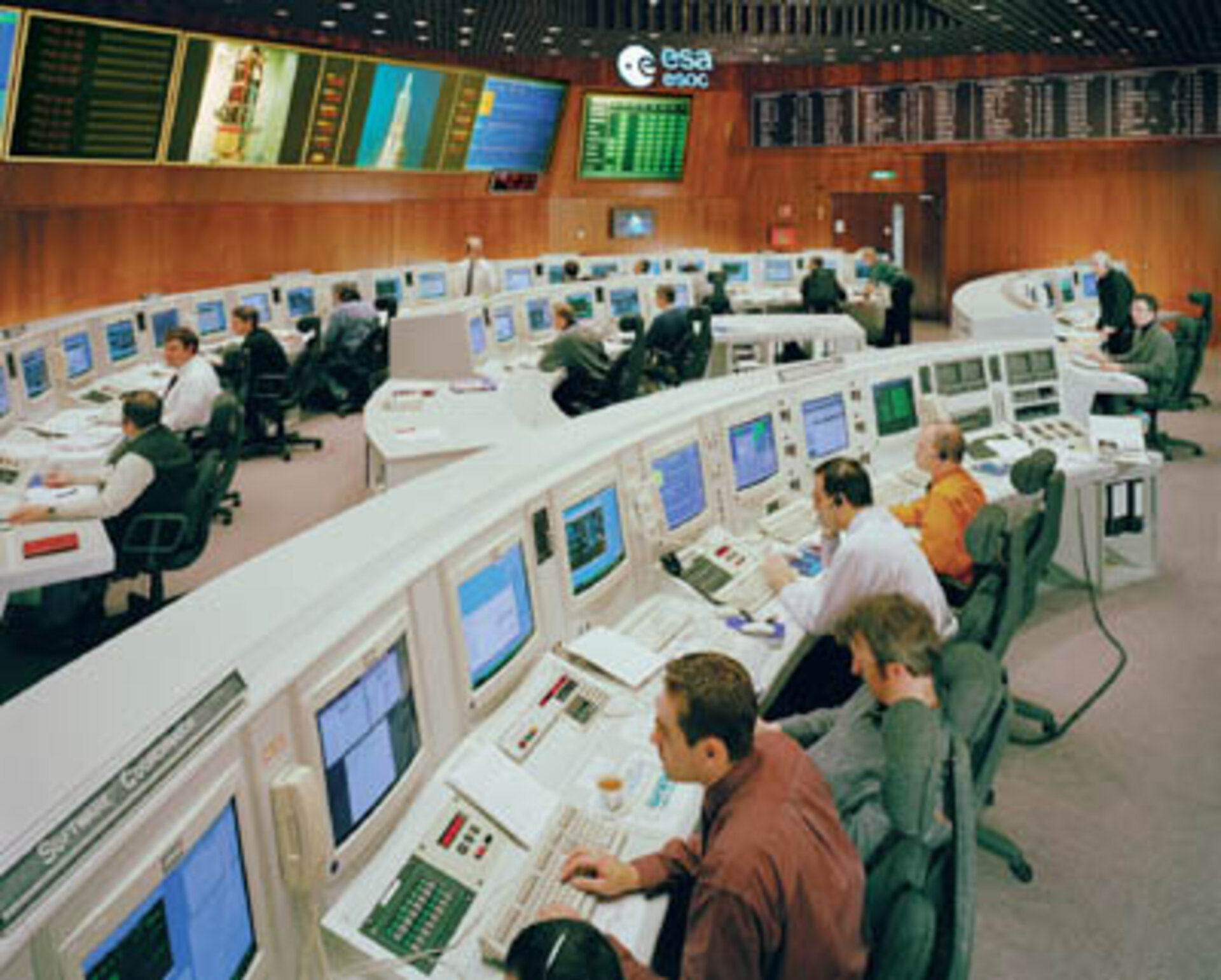What happens when a mission is complete?
Mission extensions
When a science mission is approved, its operations are funded for an initial period of time that allows the scientific objectives to be reached. A mission's primary operational phase usually lasts two to four years from the beginning of the nominal scientific operations phase. In almost all cases, however, the engineers build the satellites with enough fuel and other consumables to allow the mission to be extended, either because this was an initial requirement or simply due to the margins applied during the design and development.
Extensions are considered on a case-by-case basis and are approved by ESA's Scientific Programme advisory bodies. The scientific value of the expected return of data versus the cost of extending the mission is a deciding factor in the approval of the extension. For example, in October 2012 ESA’s Integral spacecraft celebrated ten years of science operations – its initial nominal mission was two years.
Turning a satellite off
Not all missions are extended, though. Some consumables may only be sufficient for the nominal mission (i.e. for cryogenic missions), or may have undergone a higher than expected consumption and as a consequence the mission extension is not considered useful. Sometimes before switching off a spacecraft, engineers test certain elements in extreme conditions, in order to achieve useful information for future missions. In the case of ESA's Infrared Space Observatory (ISO), when its sensitive detectors ran out of an essential coolant during its extended mission, the operations team spent a month rigorously testing specific hardware and software systems before finally deactivating the spacecraft. They did this because identical systems were being built into two following ESA missions, XMM-Newton and Integral, which have both benefitted from the information acquired and have been operating for over ten years.
Before terminating the mission, the Mission Operations Centre brings the satellite to a safe orbital position in order to avoid it catastrophically re-entering Earth’s atmosphere. Alternatively, the satellite will be guided through a controlled re-entry, such that the heat generated during the re-entry destroys it, and any remaining small debris falls onto non-populated areas or into the ocean.
Planetary protection
Some spacecraft may have a dramatic ending. For example, the Cassini spacecraft will end its mission in 2017 by flying through Saturn’s ring plane to collide with the gas planet. For other satellites this type of manoeuvre is not possible because an impact may contaminate the object of interest. This poses additional ‘planetary protection’ constraints on how a mission is prepared and operated. For example, with much evidence of water on Mars there is a strong possibility that life could have once existed here. Scientists don’t want to risk contaminating the surface, so what to do with Mars Express at the end of its mission poses an additional challenge.
For rovers operating on the surface, such as ESA’s planned ExoMars mission that will search for traces of life on the Red Planet, the planetary protection constraints will be even tougher, with strict sterilization procedures required for each component of the rover.
Planetary protection issues will also face scientists and engineers operating Juice, which will orbit the ocean-bearing moons of Jupiter to assess their potential for hosting life.
For missions like these, spacecraft engineers may use the satellite’s remaining fuel to boost the satellite to a higher altitude or different orbit, where it will avoid colliding with the ‘protected’ planet or moon.

Space junk
For Earth-orbiting spacecraft the issue of ‘space junk’ is an ever-increasing problem.
There are millions of pieces of space debris ranging from tiny flakes of paint to spent rocket stages and satellites, that are actively tracked by space agencies. Space is becoming increasingly congested with the risk of collisions of debris with active satellites ever-increasing.
Satellites in low Earth orbit can have their orbits adjusted so that they will eventually re-enter and burn up safely in the Earth’s atmosphere, over an ocean. High-altitude geosynchronous satellites are typically raised to ‘graveyard’ orbits, but with more and more inactive satellites ending their lives here, what to do with spacecraft at the end of their useful lifetime is becoming an ever-increasing concern.
Mission legacy
Although the operational phase of a mission may be over, much work continues. All of the data collected throughout the mission goes into an archive that can be accessed by scientists all over the world and used for further scientific research.
Another aspect of work following the completion of a mission is to either start or continue working on the study of the next, follow-on mission. Science often generates new questions at the same time as answering the previous batch. As time progresses, so technology advances and allows engineers to build more complex spacecraft with improved capabilities. For example, ESA is following up the work of its star-mapper, Hipparcos, with its Gaia mission. Scheduled for launch in 2013, Gaia will greatly extend the work of Hipparcos.















 Germany
Germany
 Austria
Austria
 Belgium
Belgium
 Denmark
Denmark
 Spain
Spain
 Estonia
Estonia
 Finland
Finland
 France
France
 Greece
Greece
 Hungary
Hungary
 Ireland
Ireland
 Italy
Italy
 Luxembourg
Luxembourg
 Norway
Norway
 The Netherlands
The Netherlands
 Poland
Poland
 Portugal
Portugal
 Czechia
Czechia
 Romania
Romania
 United Kingdom
United Kingdom
 Slovenia
Slovenia
 Sweden
Sweden
 Switzerland
Switzerland


























